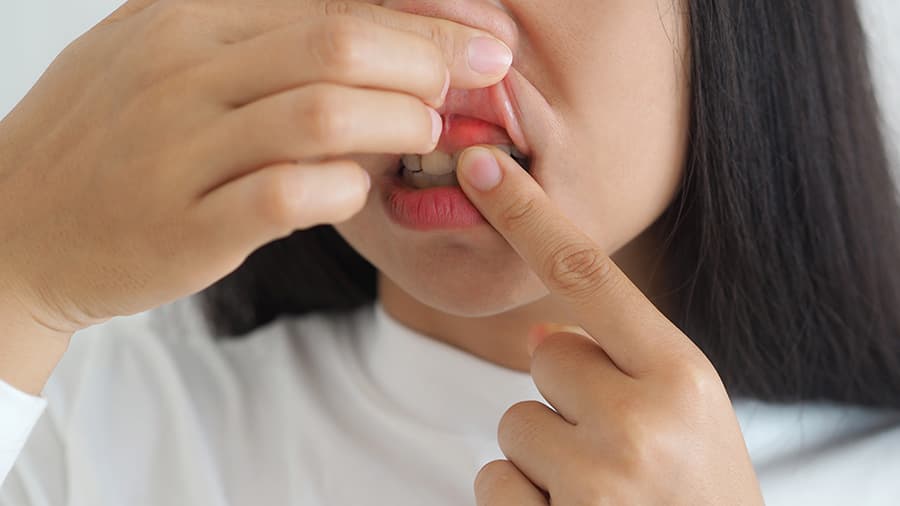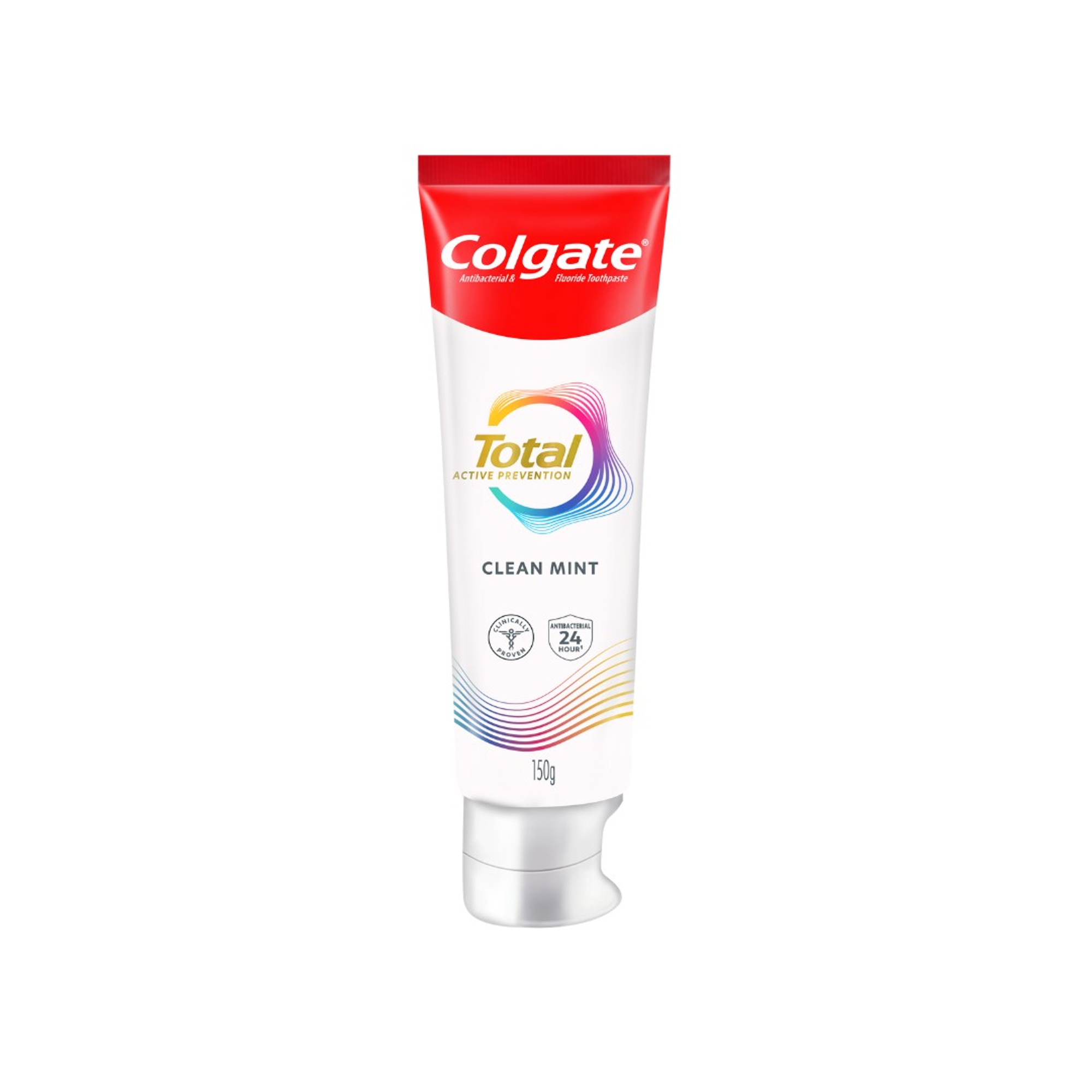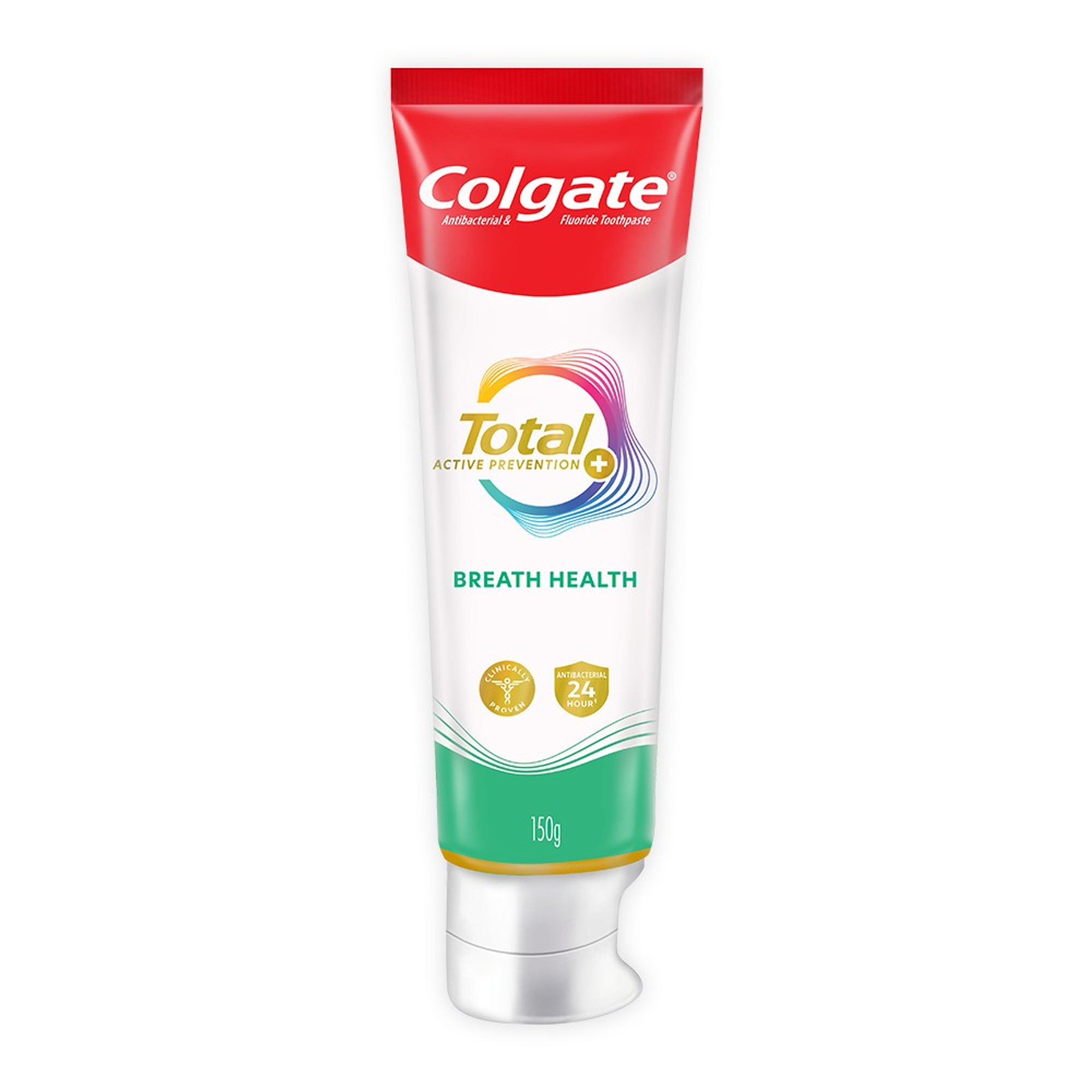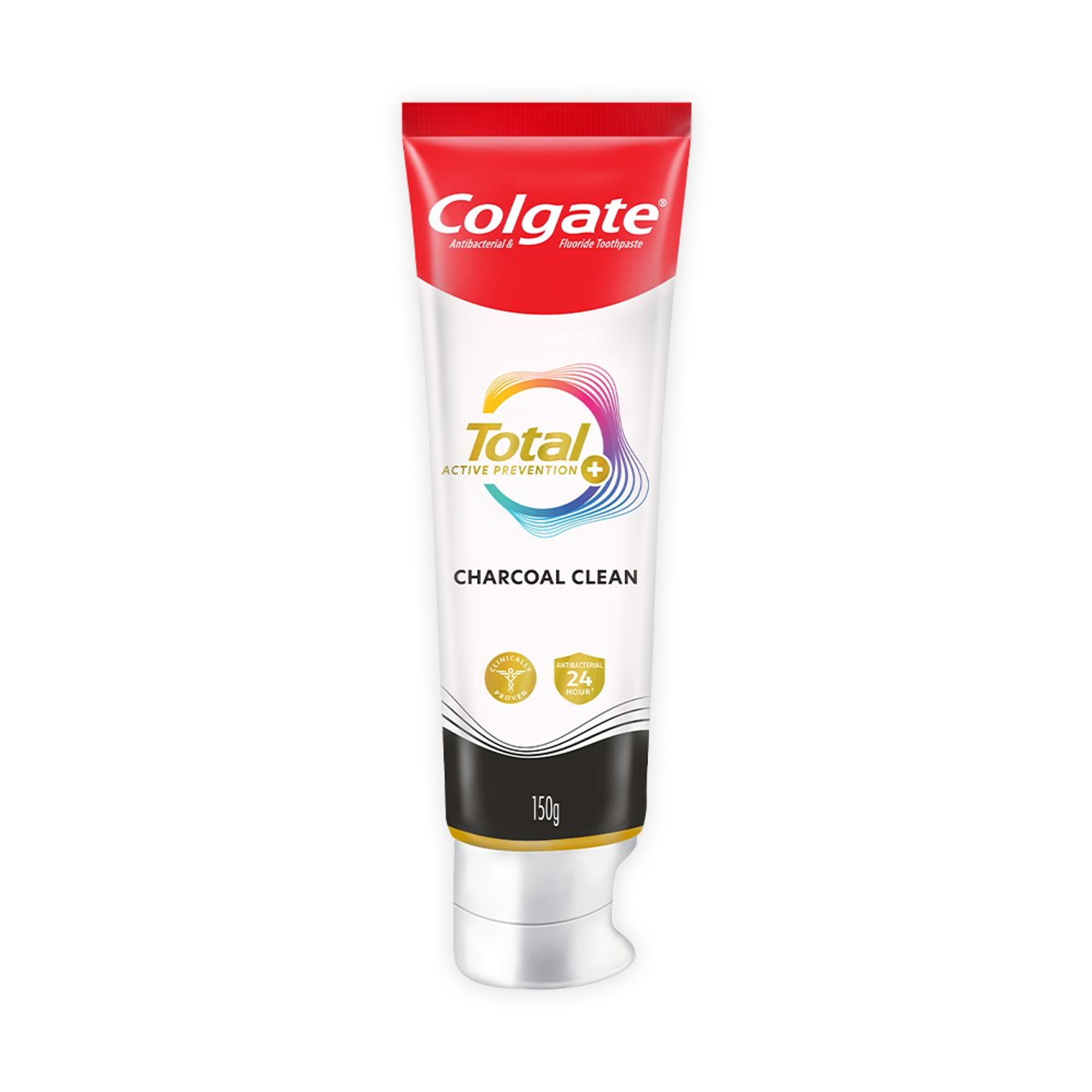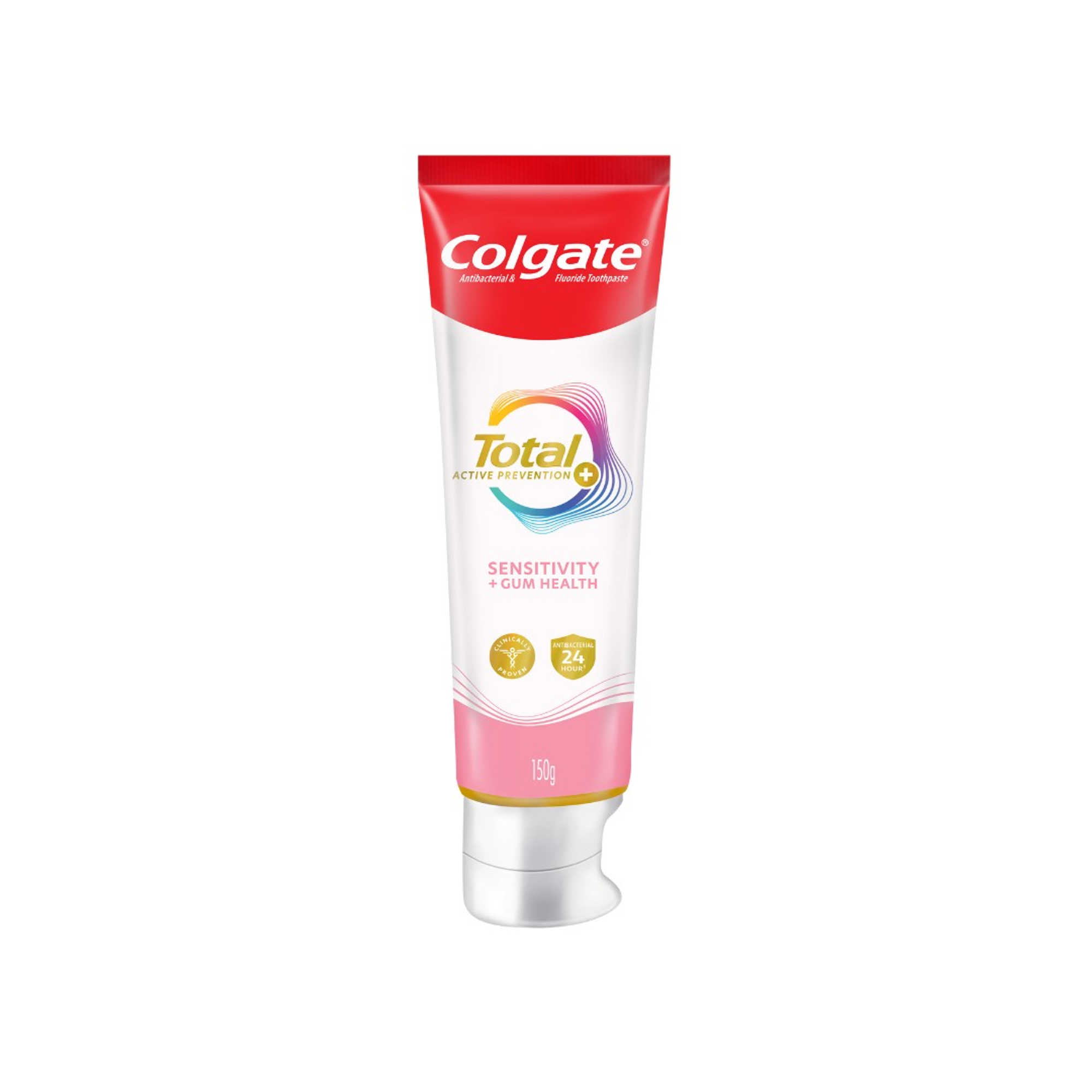How to Identify Canker Sore vs. Cold Sore?
If you are trying to figure out whether you have a canker sore or a cold sore, there are some key differences to look out for. While both of them can cause discomfort, they differ in where they usually appear, how they look, and what causes them. Here are some major factors to help you identify canker sores vs. cold sores.
Canker Sores
Canker sores, also known as minor aphthous ulcers, or singaw in Tagalog.
Appearance: Small, round, or oval shallow lesions inside the mouth; white or grey with a red border
Symptoms: Painful, with a tingling or burning sensation and high fever.
Common Areas: Inside the mouth, on the tongue, or the inner cheeks.
Contagious: No, canker sores are not contagious.
Cold Sores
Cold sores, also called fever blisters.
Appearance: Fluid-filled blisters around the lips that eventually burst and form a crust.
Symptoms: Burning, itching, or tingling sensation; may cause swollen lymph nodes in the neck area.
Common Areas: Lips, around the mouth, sometimes on the gums or the roof of the mouth.
Contagious: Yes, cold sores are highly contagious.
What Causes Canker Sores And Cold Sores?
Understanding the causes of canker sores and cold sores is vital if you want to manage and prevent them effectively. Knowing the triggers can help you take the right steps to avoid the occurrence of these sores in the first place. Let us explore the common causes of each type of sore so that you can be proactive in preventing them.
Canker Sores
While what causes canker sores is unknown, it is widely believed that your family history plays a major role. Factors include:
Fatigue: Lack of sleep and general fatigue can weaken your body's defences, making you prone to canker sores.
Emotional stress: High levels of stress, anxiety, and even hormonal changes are considered to trigger canker sores in many people.
Food allergies: Some individuals may develop canker sores as an allergic reaction to specific foods.
Minor injuries: Biting the inside of your cheek or tongue, chewing sharp foods, or burning hot foods may lead to canker sore on tongue.
Immune system problems: Issues with the immune system may contribute to the development of canker sores.
Vigorous tooth brushing: Brushing your teeth too aggressively may cause trauma to the soft tissues in your mouth, leading to sores.
Irritation from braces or dentures: Dental appliances like braces or dentures may cause constant irritation, resulting in canker sore on gum.
Nutritional deficiencies: Deficiencies in iron or other essential vitamins are believed to be linked to canker sores.
Acidic foods: Eating acidic foods, such as citrus fruits, and spicy foods, may trigger or worsen canker sores.
Underlying health conditions: Conditions such as celiac disease, Crohn’s disease, Behcet’s disease, or inflammatory bowel diseases may make individuals more likely to get recurrent canker sores.
Cold Sores
Caused by the herpes simplex virus (HSV-1), which can be triggered by factors such as stress, illness, or sun exposure. Other key factors include:
HSV-1 Infection: Cold sores are caused by herpesvirus. Once infected, the virus stays in the body and can periodically become activated, causing cold sores to appear from time to time.
Stress: Mental or emotional stress can weaken the immune system and may trigger cold sore outbreaks.
Direct contact: Cold sores are highly contagious and can spread through direct contact with saliva, skin, or surfaces contaminated with the virus.
Trauma to the lips: Injury or trauma to the lips, such as biting or dental treatment, may provoke cold sore outbreaks.
Sun exposure: Ultraviolet (UV) light exposure, particularly on the lips, may trigger dormant HSV to reactivate and cause cold sores.
- Weakened immune system: Illnesses that weaken the immune system, such as colds or flu, may increase the likelihood of cold sore outbreaks.
How to Treat Canker Sores And Cold Sores?
Both canker sore and cold sore usually heal on their own. Minor canker sores typically take a week or two to heal, while to get rid of cold sores may take two to four weeks. Cold sores usually do not leave scars; however, major canker sores have the potential to cause scarring. There are both home remedies and treatments available for canker sores and cold sores.
Home Remedies
There are simple ways to treat canker sores and cold sores at home, but it is important to keep in mind that there is insufficient data to support the effectiveness of these home remedies. Use caution and consult your healthcare professional if you feel any irritation.
Canker Sore Remedies:
Saltwater Rinse: Rinsing your mouth with a saltwater solution can help soothe the sores and reduce inflammation.
Milk of Magnesia: Dabbing milk of Magnesia on the sore with a cotton swab can help neutralize acids and alleviate pain.
Mouthwash: Using over-the-counter mouthwashes, particularly those that are alcohol-free or have a numbing effect, may work as a canker sore remedy and offer relief.
Diet: Avoid hot, spicy, or acidic foods and beverages, as they may irritate the sore and slow down the healing process.
Cold Sore Remedies:
Creams/Gels: Over-the-counter creams or medicated gels can help reduce pain and keep the skin soft while it heals.
Cold Compress: Applying a cold compress to the sore can numb the pain, but avoid placing ice directly on your skin to prevent damage.
Sunscreen: Using sunscreen on your lips can help prevent cold sores, especially if your outbreaks are triggered by sun exposure.
Medical Treatments
If your symptoms last longer, you may discuss treatment options and get medical advice from a dental professional.
Canker Sores Treatment:
Topical Treatments: Over-the-counter topical anaesthetics and antimicrobial mouthwashes are commonly used for canker sore treatment and may provide temporary relief.
Prescription Treatments: Antimicrobial or corticosteroid mouth rinses can reduce inflammation and prevent infection. If nutritional deficiencies are the cause, your healthcare provider may suggest specific vitamins or supplements.
Cold Sores Treatment:
Antiviral Medications: These may come in topical or oral forms and can help reduce the duration and severity of the outbreak.
Pain Relief: If you are experiencing significant discomfort, your dentist might prescribe pain relief medications to manage the symptoms.
How to Prevent Canker Sores and Cold Sores?
Preventing cold sores starts with taking measures to avoid the spread of the herpes virus, especially if you are already infected. Since cold sores are often contracted in early childhood, practising good hygiene and caution is crucial. Avoid kissing, sharing towels, dishes, or cutlery, and wash your hands frequently, especially after touching your lips. If you are prone to cold sores, consider taking regular antiviral medication as recommended by your dentist to reduce outbreaks. Additionally, avoid known triggers like stress and sun exposure.
For canker sores, prevention begins with identifying and avoiding triggers. If you are looking for ways on how to remove canker sores caused by mouth injuries, chew food slowly, avoid talking while chewing, and use a soft-bristled toothbrush and gentle toothpaste. Adjust your diet to avoid acidic and sharp foods like tomatoes, orange juice, potato chips, and crunchy bread. Practising relaxation techniques such as exercise and deep breathing can help manage stress-induced sores. Ensure your diet includes sufficient vitamins and minerals, particularly iron, folic acid, vitamin B12, and zinc, to prevent nutrient-related canker sores. These supplements may cause side effects, so consult a doctor before use.
Understanding the differences between canker sore vs cold sore is crucial for effective management and treatment. While canker sores are caused by factors like stress and minor injuries inside the mouth, cold sores are caused by the herpes simplex virus and appear around the lips. Prevention involves practising good oral hygiene, avoiding triggers, and maintaining a balanced diet to minimise their occurrence and impact.
Frequently Asked Questions
1. How do you tell if it's a canker sore or a cold sore?
The main difference between canker sore and cold sore lies in the location of their appearance. Canker sores are small white or grey mouth ulcers with a red border, typically inside the mouth. Cold sores are usually around the lips or inside the mouth and appear as fluid-filled blisters forming a crust after bursting.
2. Are canker sores from poor dental hygiene?
Canker sores are not caused by poor dental health, but they can get worse if you do not take care of your mouth. You should practice brushing your teeth twice a day with a soft-bristled brush, flossing at least once a day, and drinking plenty of water.
3. What are the stages of a canker sore?
At the earliest stage, the affected area becomes red, slightly swollen, and begins to hurt. Later, within one to three days, the swelling develops into a whitish spot. After a few days, the pain fades away, and within about a week, the sore heals completely.








